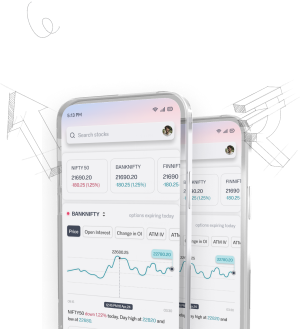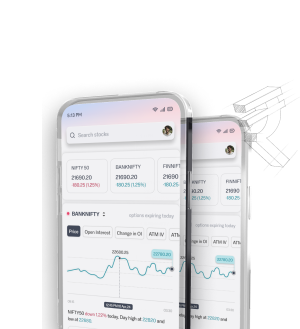Turtle Trading System: Richard Dennis & William Eckhardt's Trend-Following Experiment
In the early 1980s, Richard Dennis and William Eckhardt started an experiment that changed trading forever. They wanted to see if trading could be taught. They found that strategy and psychology were key to success in trading. He took less than $5,000 and in a few decades turned it into over $100 million. This made Dennis and Eckhardt wonder if trading skills were inherent or could be taught. They decided to create a trading system based on rules rather than emotions. It was the beginning of one of the most famous trend-following experiments.
Let us consider the Turtle Trading System, an important stock market method that has been very instrumental in changing the lives of many traders.
Main Points
- The Turtle Trading System was built to test if people not familiar with the trading world at all could change.
- Turning a small stake into more than $100 million, Richard Dennis proved the system's potential.
- Many people wanted to join the experiment, but only 14 were chosen, showing how exclusive it is.
- Dennis's trained Turtles earned over $175 million within five years, sufficient proof that the system really works.
- It is designed to be risk-aware, proposing a 1% risk rule for the safety of traders' money.
Only on average, the original Turtle Traders generated an 80% annual return, indicating magnificently profitable trend following.
The Dawn of Turtle Trading
The story of Turtle Trading is with Richard Dennis and William Eckhardt. They were curious if beginners can learn skills of trading. Dennis believed that with the proper training, everyone can be a master trader. Eckhardt was not so sure.
They placed an advertisement in The Wall Street Journal in order to find trainees. More than a thousand responses were received to this ad. From these responses, they selected 14 people for the Turtle Trading course.
The training for these 14 individuals lasted two weeks. They were trained to trend-follow in markets involving commodities and currencies. Dennis gave each Turtle from $500,000 to $2 million to trade. It psyched me into believing that to really succeed in trading, one needs much discipline and patience. It helped in cutting down emotional choices. Dennis said he wanted to teach something easy—something less emotional.
If we think about it, Turtle Trading was started with a lot of fresh ideas. Some Turtles made well over 100 percent in one year. This is how strong the trend-following strategy was.
Richard Dennis and William Eckhardt: The Important People
Richard Dennis and William Eckhardt are names known in trading. Richard Dennis took a small sum of money and grew it to $200 million. This confirms that he is very good in the markets.
William Eckhardt questioned whether people could become good traders due to talent or learning. Thus, the Turtle Trading experiment came into existence.
This experiment showed that Dennis believed in teaching trading strategies. He gave ten people—who were called Turtles—$1 million to trade. They used a trend-following strategy that changed how trading was done.
The Turtle Trading experiment checked whether Dennis' methods worked and whether trading skills can be teachable.
Many people applied for the project and in Chicago. A difficult choice picked those who could follow strict rules. Training that day changed how trading is taught and created a standard for success today.
| Key Players | Achievements | Core Belief |
|---|---|---|
| Richard Dennis | Transformed several thousand dollars into $200 million | Trading success can be taught through specific rules |
| William Eckhardt | gave important ideas about trading success | Success might come from natural ability |
The Turtle Trading System
The Turtle Trading System is one of the more famous examples in trading. It demonstrates how having a clear, well-defined plan is integral in generating outsized returns. It emphasizes following trends. This means traders find and follow market trends to help themselves out.
Core Concepts of Trend Following
Normally, markets have similar trends over time. By being able to notice these trends early enough, one will be in a safe and good position to make the best trade decisions. This is the system that notifies us when the market rises or falls. We are supposed to navigate the market with ease by using this strategy.
Strategy Breakout and Trends
The breakout strategy is important in the Turtle Trading System for finding trends. It means deciding when to enter when prices go above old highs or below old lows. This helps us follow the market's movement and might lead to more successes.
The system uses the Average True Range to build the levels of placing stop losses. These rules are essential for managing risk while trying to make gains across different markets.
| Market Type | Characteristics | Recommended Currency Pairs |
|---|---|---|
| Currency exchange | Large markets characterized by high volume | USD against CHF, DEM, GBP, JPY, CAD |
| Commodities | Diverse range of products available | Crude oil, gold, silver |
| Bonds | Stable income generation | U.S. Treasury Bonds |
Rules are important to follow when using the Turtle Trading System. It will help us maximize several market opportunities and be in a position to handle several levels of market ups and downs.
Finding the Turtles: The Search Process
Richard Dennis wanted to find the next great traders. He had a particular method to choose the people that applied from over a thousand. These people came from many different backgrounds, showing how varied they were.
But to join you had to move to Chicago and pass a grueling exam with 63 questions that asked on such trading topics as risk management and market analysis. Dennis just wanted to know if it really could be done. After successfully passing the test, he received an offer which told exactly how much money can one make—you can make 15% of the profit after the training. People like Tom Shanks and Erle Keefer joined; this proved that different skills were acceptable. In the end, there were 23 people who joined, including 21 men and 2 women. They came from different jobs like acting, brokerage, law, and the military. This eclectic mix showed that anyone can be successful in Turtle Trading with proper training. Richard Dennis thought that training is far more important than talent when it comes to trading.
The Rules of the Turtle Trading System
Clear rules are very vital in trading. What makes the Turtle Trading System unique is that it consists of strict rules. These rules help traders achieve steady results by focusing on a trading method using mechanical ways to follow market trends.
This helps traders avoid making decisions based on their feelings and stick to the established rules.
First Training and Strategy Overview
Turtles learned where to exit and enter the market first. They learned to go with the flow to ride the price currents. Richard Dennis felt that it was better to follow the rules than whim.
He applied Richard Donchian's concepts regarding trend following. This instilled in the Turtles the practice of trading cautiously. They went with price analysis to arrive at trading decisions.
Risk Management and Position Sizing
The Turtle System emphasizes effective control of risk and sizing of positions. No single trade can risk more than 2% of the total money. Traders changed positions based on how much the market had moved. This helped them manage market highs and lows without losing a lot. It was quite usual to use stop-loss orders and trailing stops. All these actions helped in keeping profits safe and lowering risks. That's what made the Turtle Trading System an excellent choice for new traders.
Human Subjects: Was It Successful?
The Turtle Trading experiment went pretty fine. Richard Dennis and William Eckhardt trained the novices to master experts. Hence they pocketed $175 million in over four years proving that the system was in good health.
Success Stories of Past Sea Turtles
Ex-Turtles describe their big wins. Following the program, they were able to make twice as much money within one year. These examples show that the Turtle Trading System can bring a fast, long-term benefit.
Long-term impacts of the system
The Turtle Trading System is very important. It changed how people trade and has lasted for many years. Even with updates for today's markets, its main ideas like risk management still hold water. The success of the former Turtles attests to the firm effectiveness of trading formerly based on discipline rules in different markets.
Risk management in turtle trading
Risk is a goal in managing while trading turtles. It teaches to us about protecting our money; to make plans for better trade. We kept risk on any trade to about 2% of our money total. Carefulness in this way, helps us to keep our money safe during speculate losing times. Trade size should also vary based on the movement of the market. In wild markets, we use smaller amounts. This helps us manage our risks and make better decisions. We can keep our money safe by trading in totally different markets and watching the trends in those different markets. The Turtle Trading Strategy contains rules that prevent us from acting emotionally. We enter the trades once the market touches the new high or low. We also have rules to determine the exit of a trade, at which we use stop-loss orders and trailing stops to protect our profit.
| Risk Management Elements | Description |
|---|---|
| Position Sizing | Adjust size based on market volatility to manage risk effectively. |
| Risk per Trade | Limit risk to 2% of total account value to safeguard capital. |
| Diversification | Engage in uncorrelated markets to enhance capital protection. |
| Entry Signals | Use breakouts at 20-day high/low for position initiation. |
| Exit Mechanism | Employ stops to minimize losses and trailing stops. |
We learn risk management skills in order to confront the challenges of Turtle Trading. We can take on and make our way in changing markets with the use of strict methods and rules. We are, in this way, keeping our trading money safe and growing it over time.
Psychological Factors in Trading
The mind is very important for success in trading, especially with the Turtle Trading System. Controlling emotions is crucial to avoid making hasty, careless decisions. The Turtles followed their plans and did not let their feelings influence their choices.
Trading psychology teaches us to keep cool while markets are highly volatile. What the Turtles had already learned was how to manage their emotions in regard to winning and losing. This helped them get through the ups and the downs of trading.
They also worked on a careful method of trading to improve their results. This helped them stay focused and save money by waiting for the best time to trade. The 2% rule was important in this, making sure that one bad trade wouldn't destroy everything.
"More than secret to successful trading is keeping your emotions on hold and staying with your clear plan."
The Turtle experiment proves that the people who grasped the mental part well came out as winners. Understanding trading psychology allows us to understand why it is so important to stick with a disciplined plan.
| Mental Aspect | Effect on Trading |
|---|---|
| Emotional Discipline | Reduces impulsive trading decisions, enhancing long-term success. |
| Mental Preparedness | Equips traders to handle market volatility without panic. |
| Systematic Approach | Ensures consistency in following set rules and strategies. |
| Risk Management | Ensures no catastrophic loss occurs on a single trade. |
| Acceptance of losses | Trading encourages resilience and a long-term view on performance. |
Making it More Human: The Original Turtle Trading System
We examine how Turtle Trading can be useful in the present environment. Technology and trading models are evolving. But the traditional concepts of Turtle Trading hold relevance even today.
Modern Trading Strategies and Similar Grasp Trading
The Turtle Trading System has helped develop many of the trading methods we now have. It is trend-oriented. Now we can use computer programs that make trades for us.
This combination allows us to make faster and more effective decisions. The Turtles developed precise rules for initiating trades. The addition of algorithmic trading refines these rules even further.
- Diversification: Trading in various markets is still important.
- Position Sizing - A 20-day Moving Average will assist our trading decisions.
- Risk Management: Maintaining the 1-2% rule on any single trade helps protect our money.
Keeping Discipline and Consistency
To follow Turtle Trading in today's markets, you have to be disciplined and steady. The Turtles were very disciplined. We should be disciplined too to do well in today's complicated markets.
"Discipline and consistency are not just some buzzwords; they are critical to trading success."
Consistency, with constant change in technology, promotes good decision making. If we are to succeed with Turtle Trading, we will have to make use of new technology and remain disciplined.
Conclusion
The Turtle Trading System proved to people that close knowledge of finance could be beneficial for traders. The skills are teachable, and if one sticks to one's system, then it is the intellect that prevails. They brought in new traders and taught one a way that 'follows' trends. It indicated how a lot of money could be made from the markets by simply following rules. The risk management and trend-following ideas of the Turtle Trading System are still very applicable today. In many markets, it works; from stocks to even cryptocurrencies, it really does. Due to their risk controls and stop-loss rules, it mitigates risks while enabling traders to capture market moves. The Turtle Trading System is still helpful today, as it has adaptive abilities for the new markets. Many new traders want to know something from Richard Dennis and William Eckhardt. Their work motivates new traders to know and confidently apply new market tendencies.
FAQ
What is the Turtle Trading System?
The Turtle Trading System, developed in the 1980s by Richard Dennis and William Eckhardt, follows trends and utilizes specific rules to monetize from movements in large prices.
Who were the main people behind the Turtle Trading System?
The Turtle Trading System was invented by successful trader Richard Dennis and the doubtful creator, William Eckhardt. They wanted to find out if they could teach trading to beginners.
How were the turtles selected for participation in the trading experiment?
Dennis put an ad in The Wall Street Journal for a training program. Over a thousand people applied, and 14 were picked for their risk-taking and market knowledge.
What is the gist of the Turtle Trading System?
The core ideas circulate around keeping up with the trend: The system buys when prices rise and sells when prices drop. The system follows clear rules for initiating and ending trades to catch the market trend changes.
Were the Turtles good with money?
Five years later, the Turtles did very well for over $175 million between themselves. Most made a lot of money, which showed how great the system was working.
What is the role of risk management in the Turtle Trading System?
Managing risk is very important. The system needs strict stop-loss rules and limits each trade to 2% of the total money. This keeps losses small and protects the trader's funds.
How crucial is mental control to the Turtle Trading System?
Being mentally disciplined is very important. Traders need to follow the rules and not let their feelings affect their decisions. Keeping calm during the market's ups and downs is key to being successful.
Can the Turtle Trading System be adjusted for modern trading methods?
Yes, the crux of the Turtle Trading System follows up on discipline and organized trading but with newer ways, for example, algorithmic trading.
Disclaimer
The content provided is for educational purposes only and does not constitute financial advice. For full details, refer to the disclaimer document.




